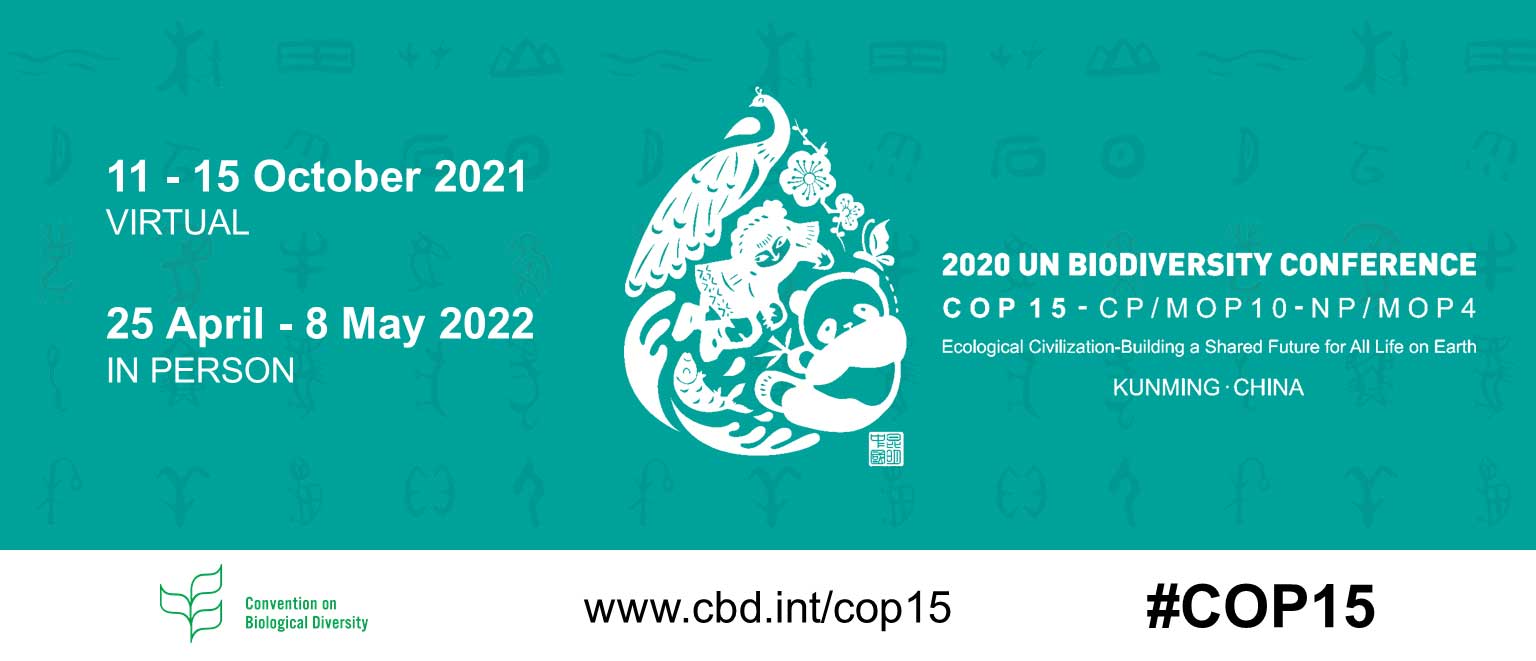By Palmo Tenzin, ICT Germany
Palmo Tenzin is the Advocacy and Research Officer at the International Campaign for Tibet in Germany, where she primarily focuses on advocating for Tibet at United Nations institutions. Palmo has an academic background in Sinology and is an experienced policy officer.

This year’s biodiversity conference of the Parties to the Convention on Biological Diversity is split into two sessions. The first session is currently underway in Kunming and is a virtual, largely ceremonial event which will culminate in a “Kunming Declaration.” The second session is where the key negotiations will play out and will be an in-person meeting from April 25 to May 8, 2022. The location of the meeting has yet to be confirmed.
Why is COP15 so important?
The new Global Biodiversity Framework is not only an opportunity to set ambitious targets to halt and reverse biodiversity loss, it is also an opportunity to shape a binding vision with a compliance mechanism in global environmental management—a first in the environmental space. The GBF can be a new mechanism that can institutionalize and operationalize human rights principles, such as the rule of law, participatory development, transparent governance, and compliance and accountability in environmental governance. Such success would empower citizens, including Tibetans, to access information, submit complaints and seek effective remedy when states have failed to fulfil their duties with respect to environmental management.
In the long run, the framework can further streamline the ecosystem approach to environmental conservation, which assesses environments according to the biological unit of the ecosystem; treats ecosystem management as a social process that must involve communities; and recognizes the need to balance the conflicting goals of conservation and economic and social interests. This approach is also more consistent with traditional Tibetan conceptions of the environment. For example, as one Tibetan environmental activist noted:[2]
“In the Tibetan approach to environmental protection, all living beings are equal. The [W]estern approach designates certain places as protected and leaves other places out … The livelihood and outlook of local farmers and nomads are central to successful environmental protection.”
Institutionalizing the ecosystem approach also creates future opportunities to address environmental challenges in Tibet that are transboundary (such as river systems, mountains, grasslands), consult and involve local communities and confront the drivers of biodiversity loss (such as urbanization, mining and in-migration).
What role can Tibet play in the biodiversity conversation?
Tibet is a region rich in biodiversity, and the biodiversity challenges facing Tibet offer insights into what is needed to shape a practical, inclusive, and accountable Post-2020 Global Biodiversity Framework.
The Tibetan Plateau is characterized by four large ecosystems which contain over 12,000 species of vascular plants, 5,000 species of organisms that grow on plants, 210 species of mammals, 532 species of birds and 115 species of fish.[3] The Tibetan Plateau is also situated at the intersection of three biodiversity hotspots—defined as the earth’s most biologically rich but threatened terrestrial regions.[4] These biodiversity hotspots have at least 1,500 vascular plants not found elsewhere and have 30% or less of its original natural vegetation.[5]
Conserving Tibet’s biodiversity ensures ecosystems are more stable, productive and resilient to environmental stress—including climate change. A biodiverse ecosystem also ensures the healthy provision of ecosystems services[6] and natural resources that at least 1.4 billion people in the Himalayan river basins rely on.
Our research shows that the Tibetan Plateau is increasingly threatened by climate warming, a lack of scientific data, blind infrastructure development and a lack of locally defined responses. One clear example of poor locally-defined responses to environmental challenges has been the creation of protected areas, such as nature reserves. The top-down approach has relocated Tibetan nomads from their grasslands, effectively ignored key areas of biodiversity and dismissed local environmental knowledge at the cost of the wellbeing of both residents and the environment.
With these Tibet-specific lessons in mind, the International Campaign for Tibet presented governments with four recommendations for designing a meaningful, inclusive and effective Global Biodiversity Framework:
- Integrate a rights-based approach throughout the framework, as it is empowered people who can enact and sustain environmental interventions
- Institute strong transparency and accountability measures
- Using the ecosystem approach, directly address the drivers of biodiversity loss
- Calibrate the language on protected areas, noting the risks of removing local communities and excluding traditional knowledge.
See a full copy of ICT’s briefing.
Footnotes:
[1] https://ec.europa.eu/environment/news/un-biodiversity-summit-cop-15-phase-one-eu-leading-ambition-new-deal-protect-people-and-planet_en
[2] Kunga Lama (Director), 2010, Shielding the Mountains [Film].
[3] Wu and Feng in Ibid. Zhang et al, 2002, page 138.
[4] Critical Ecosystem Partnership Fund, 2019, ‘What is a biodiversity hotspot?,’ https://www.cepf.net/our-work/biodiversity-hotspots/hotspots-defined.
[5] Ibid., Critical Ecosystem Partnership Fund, 2019.
[6] For example, water retention, soil retention, sand storm prevention, and carbon sequestration.
